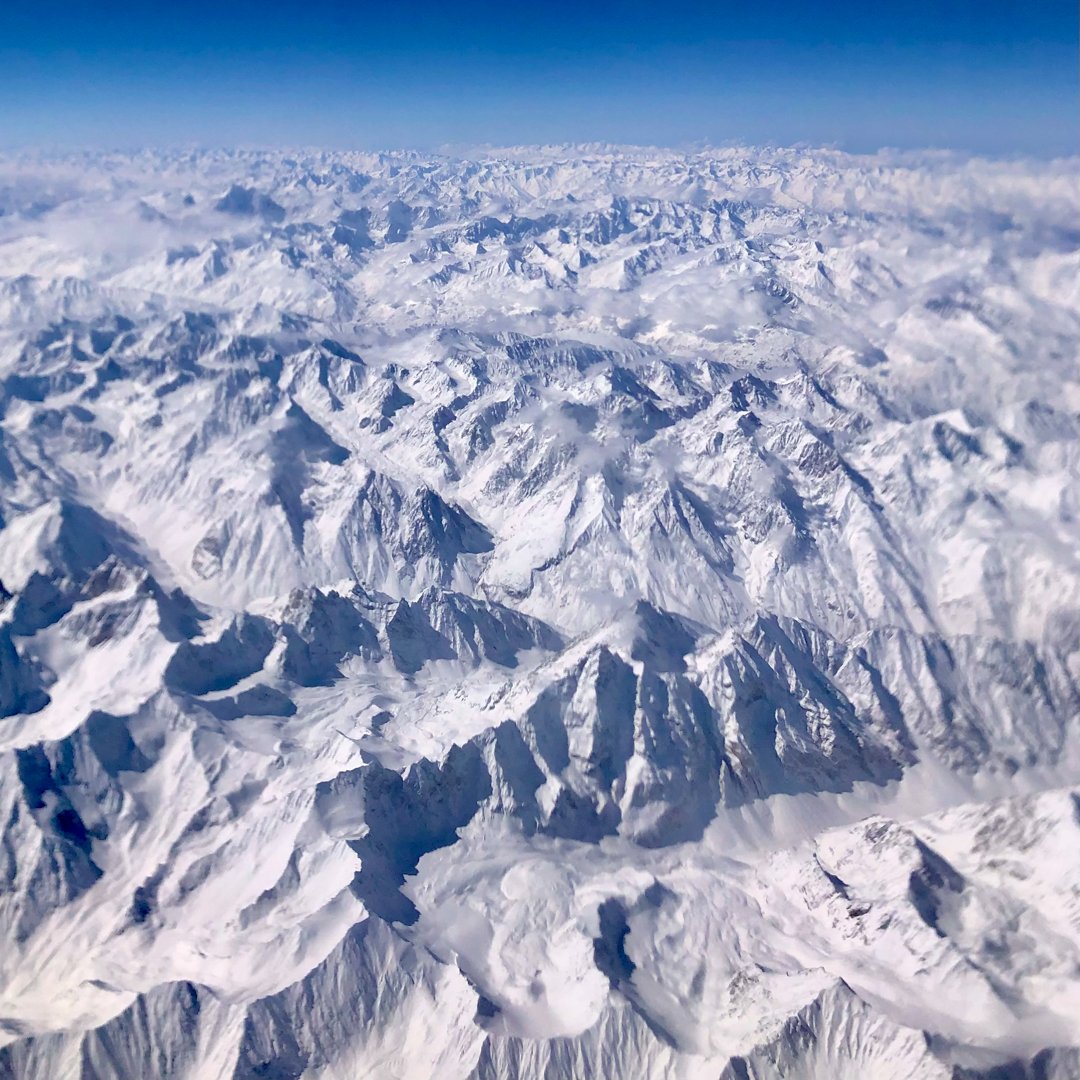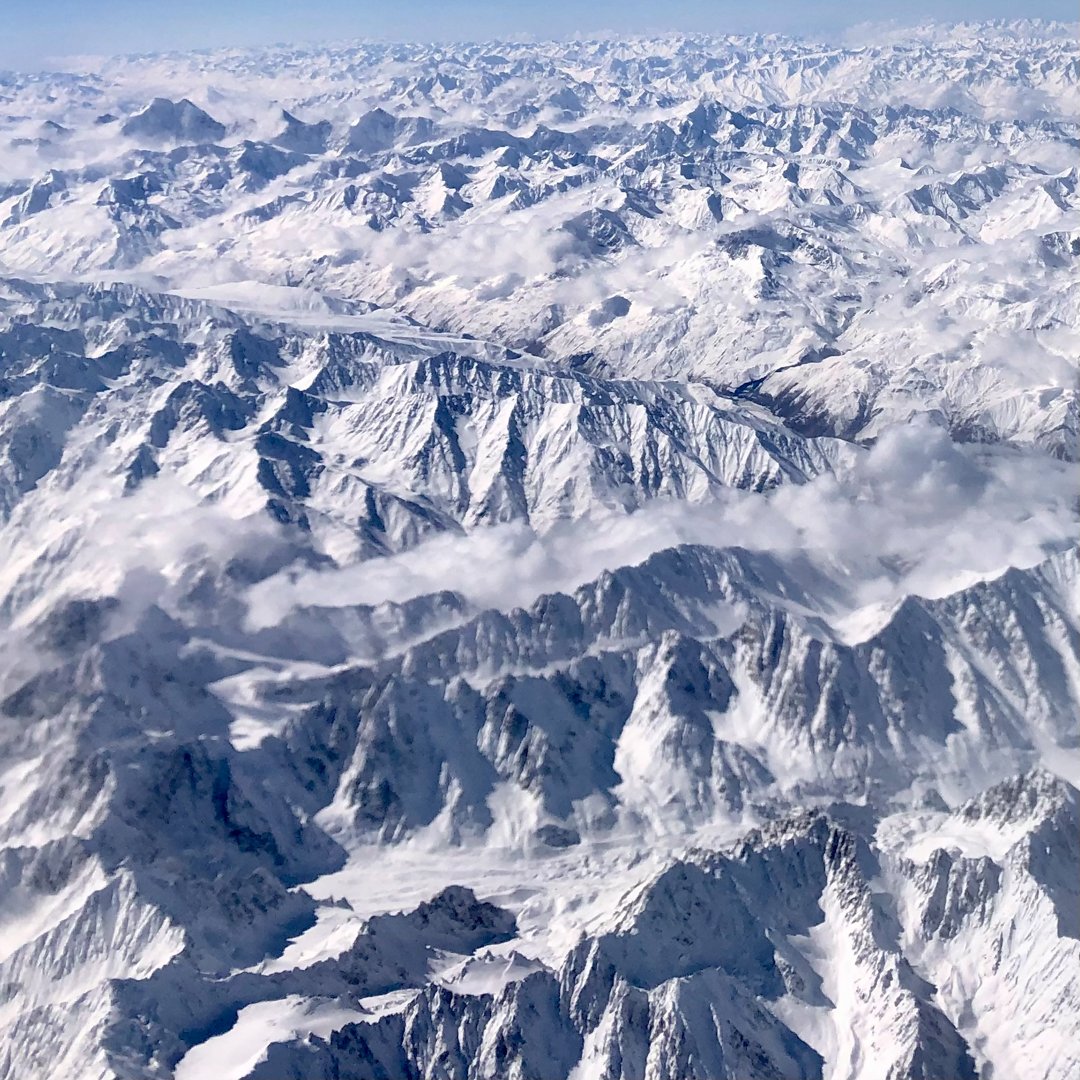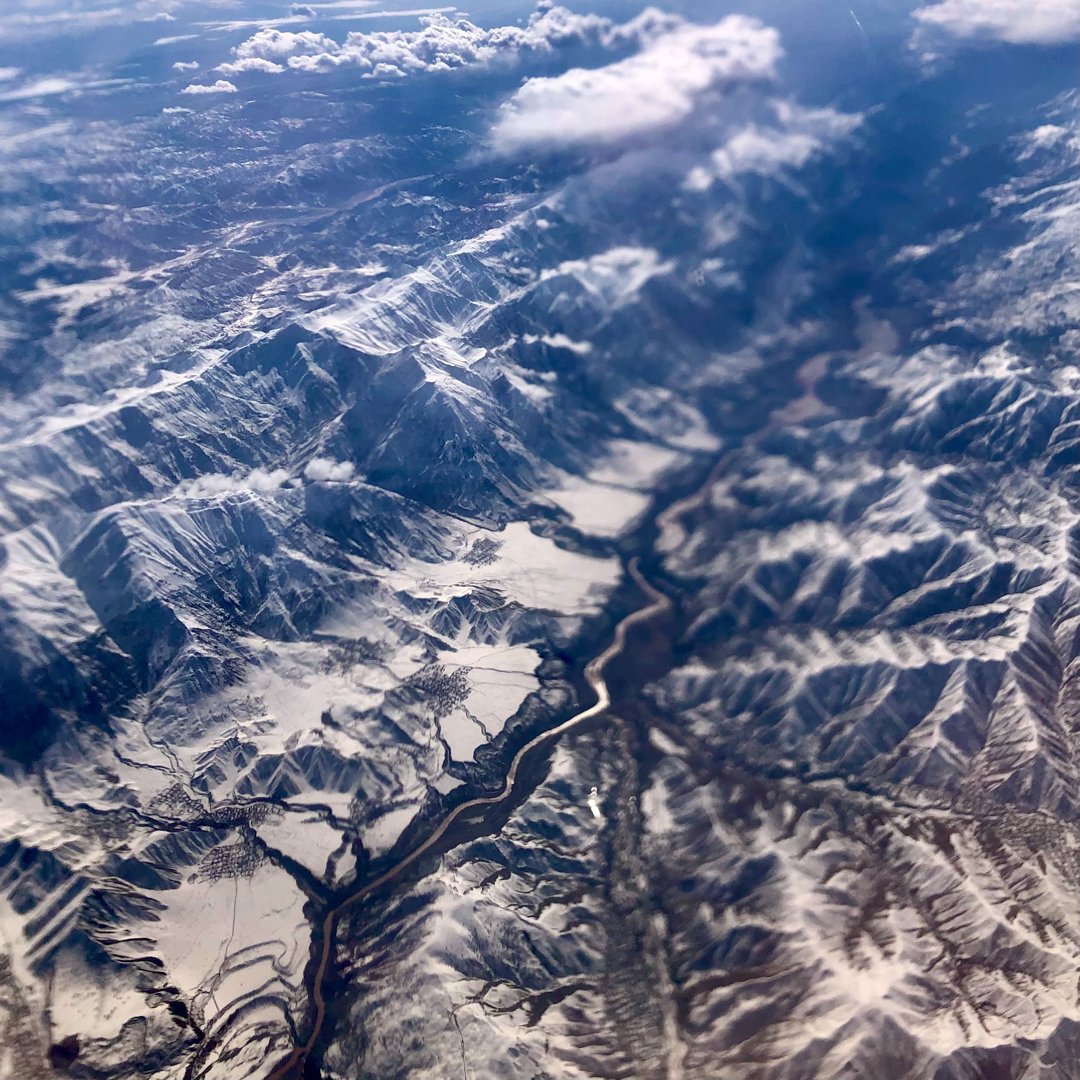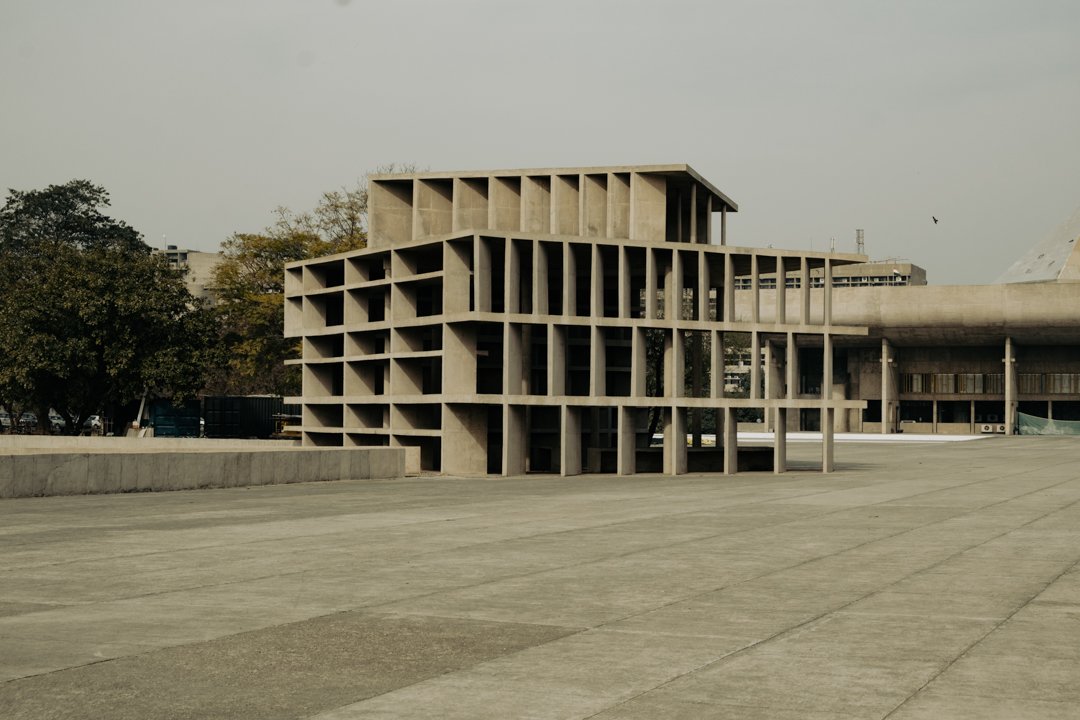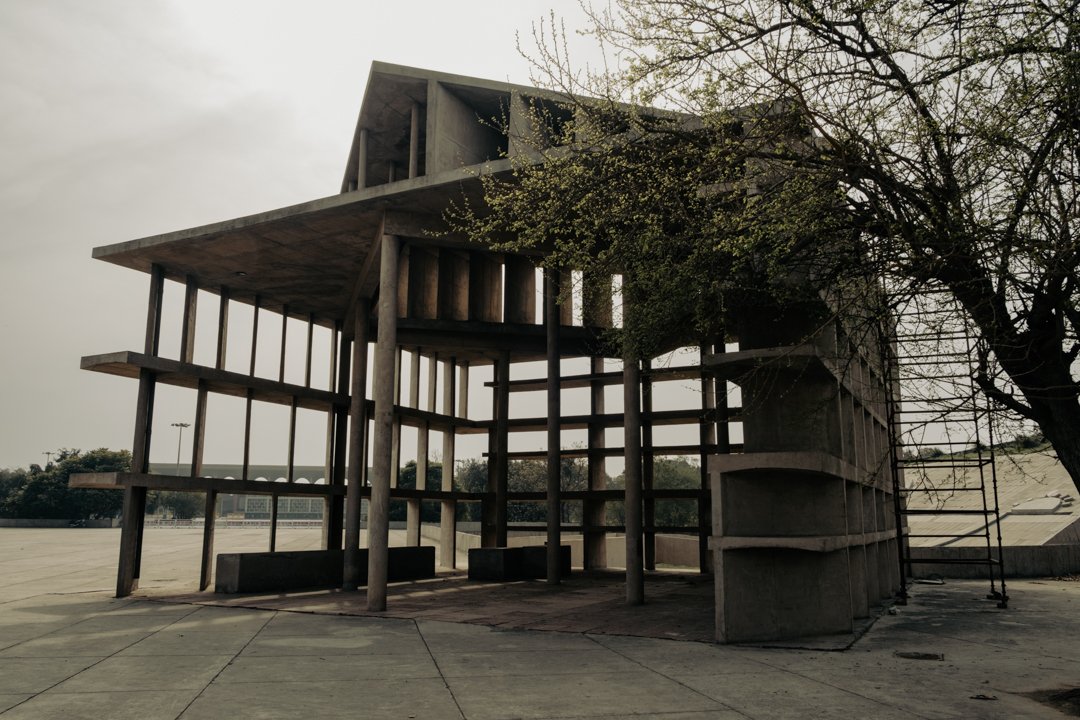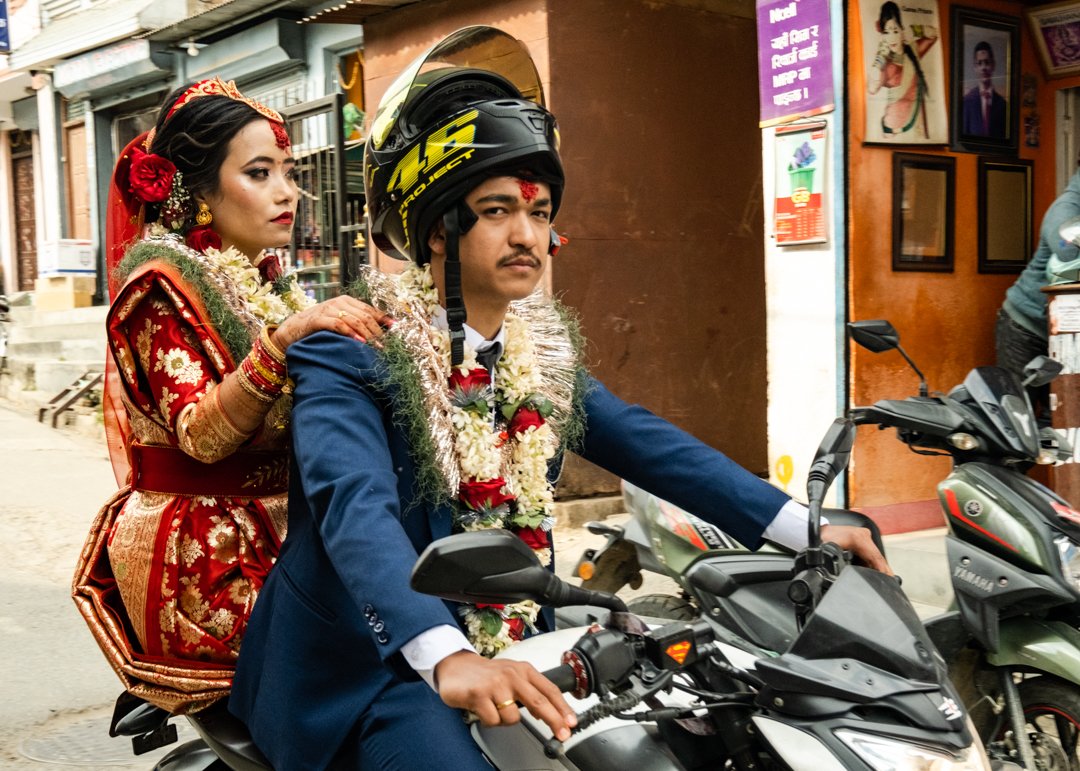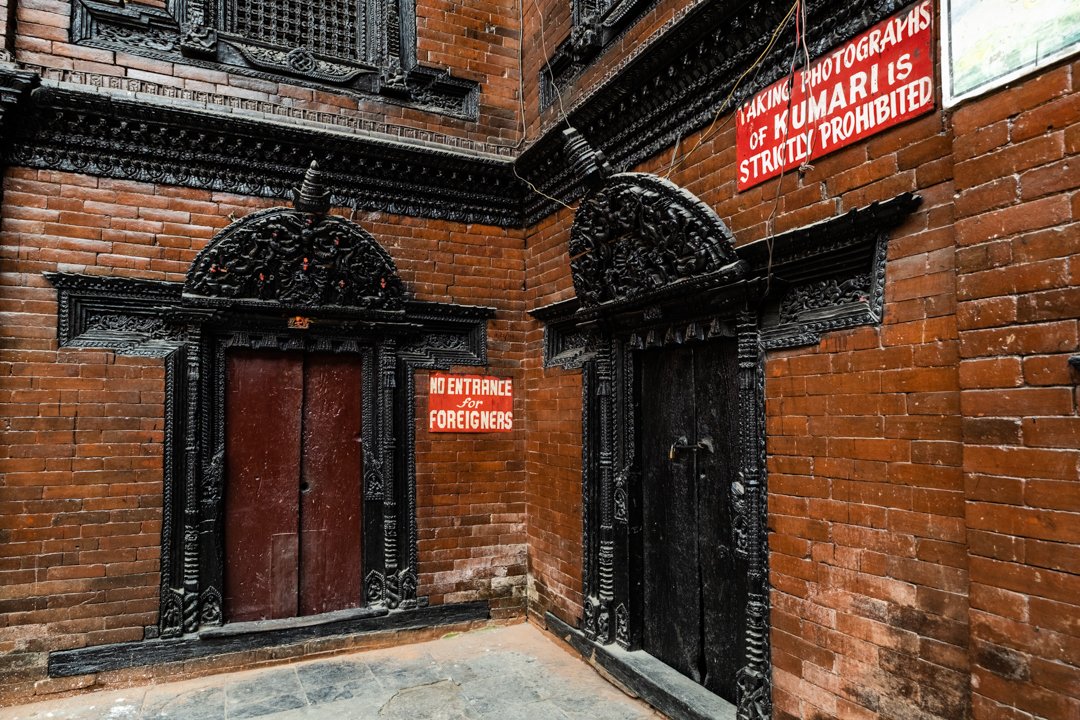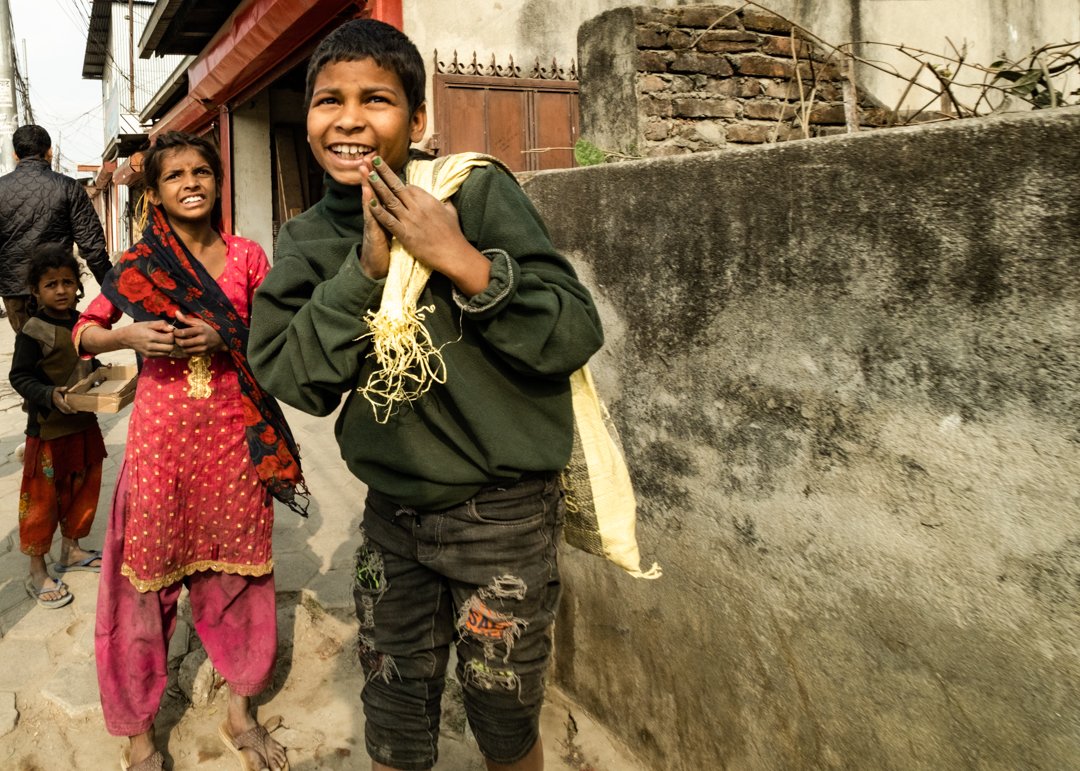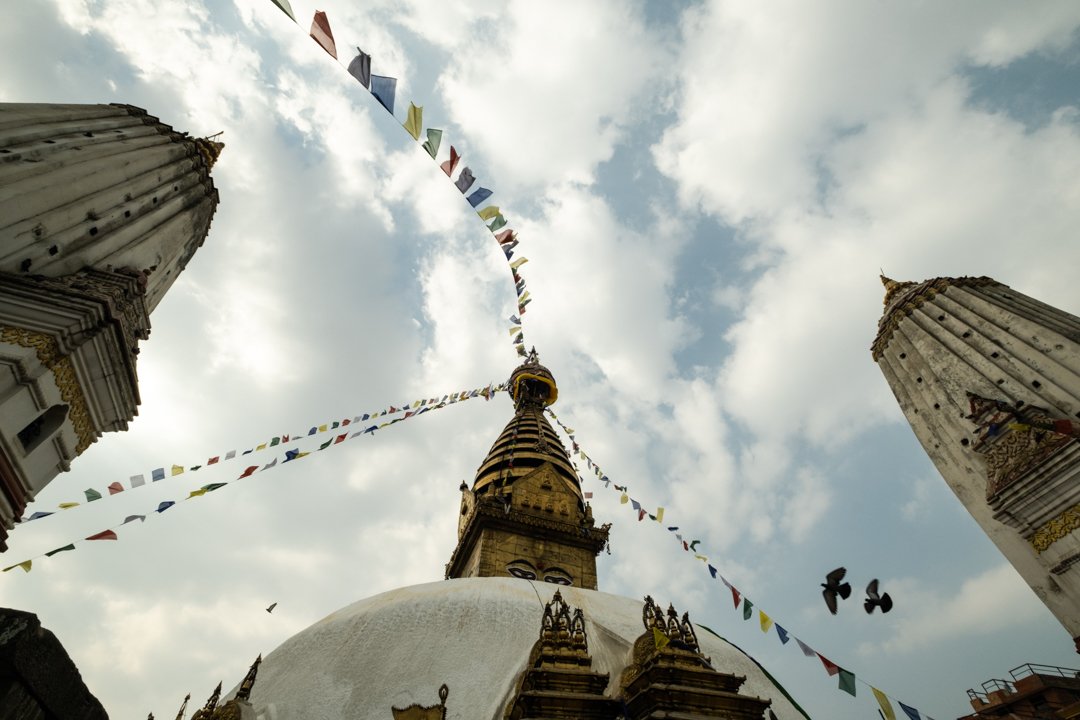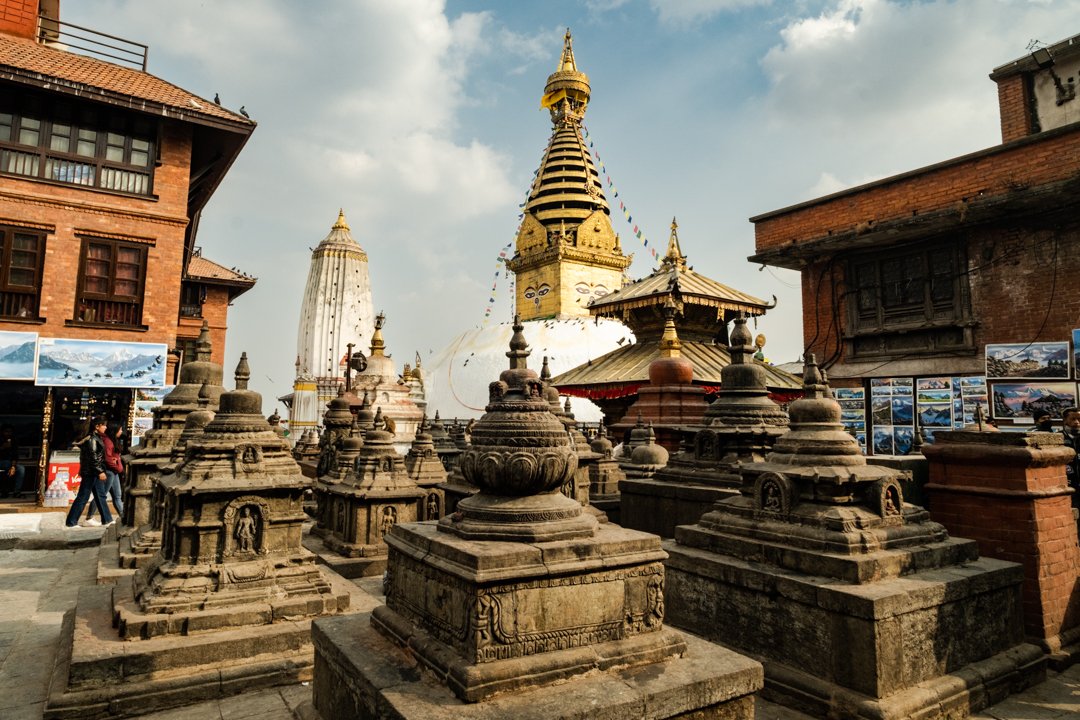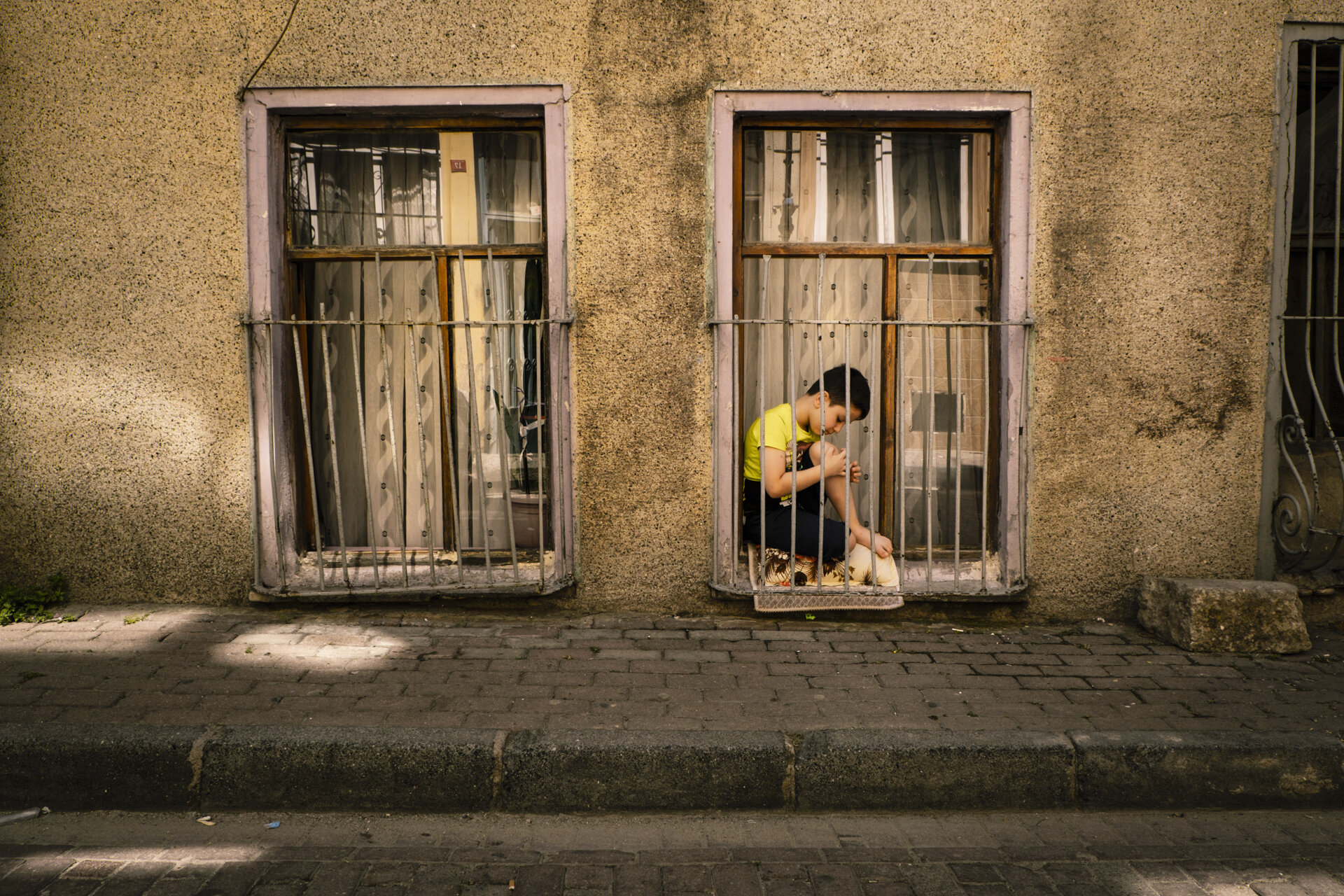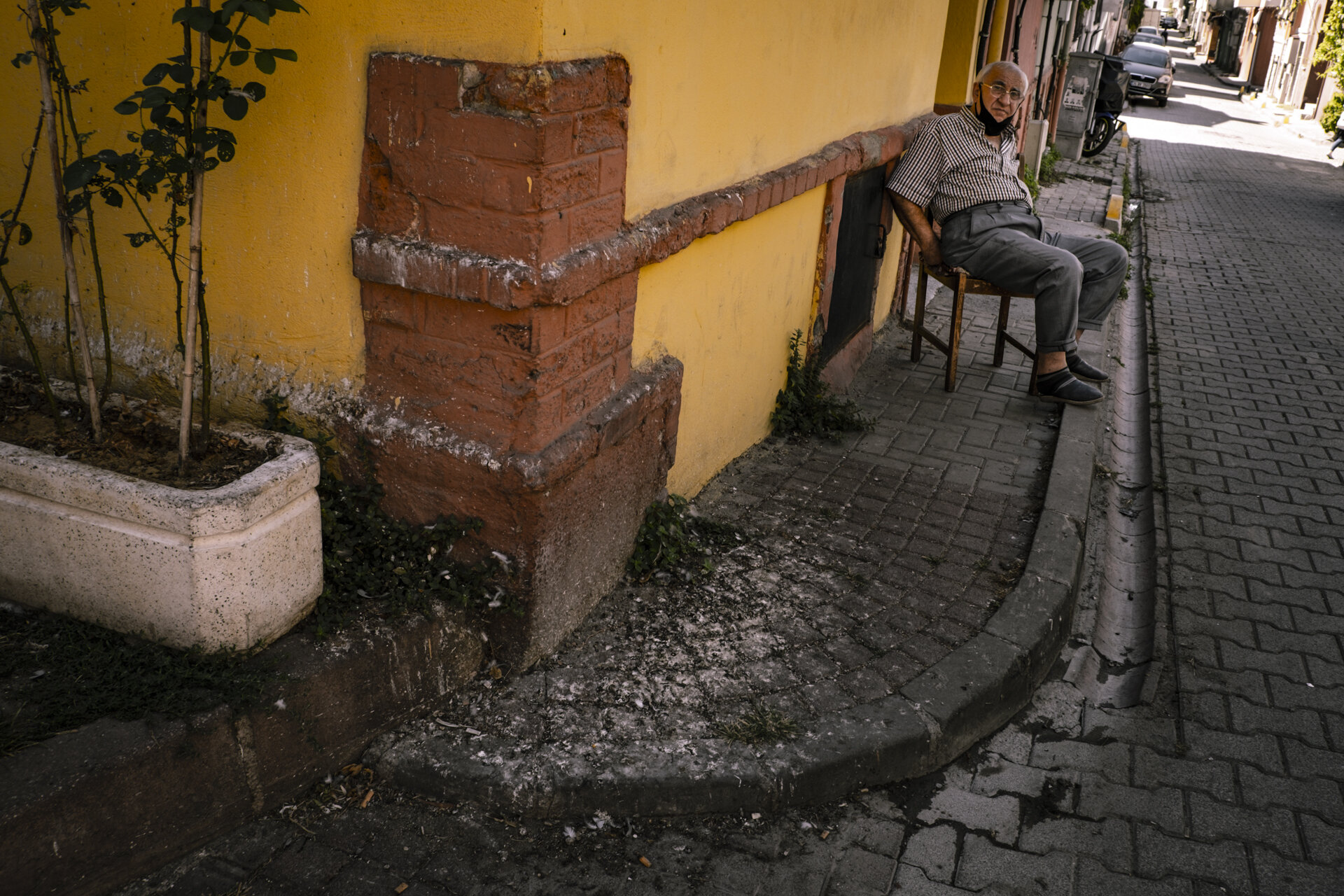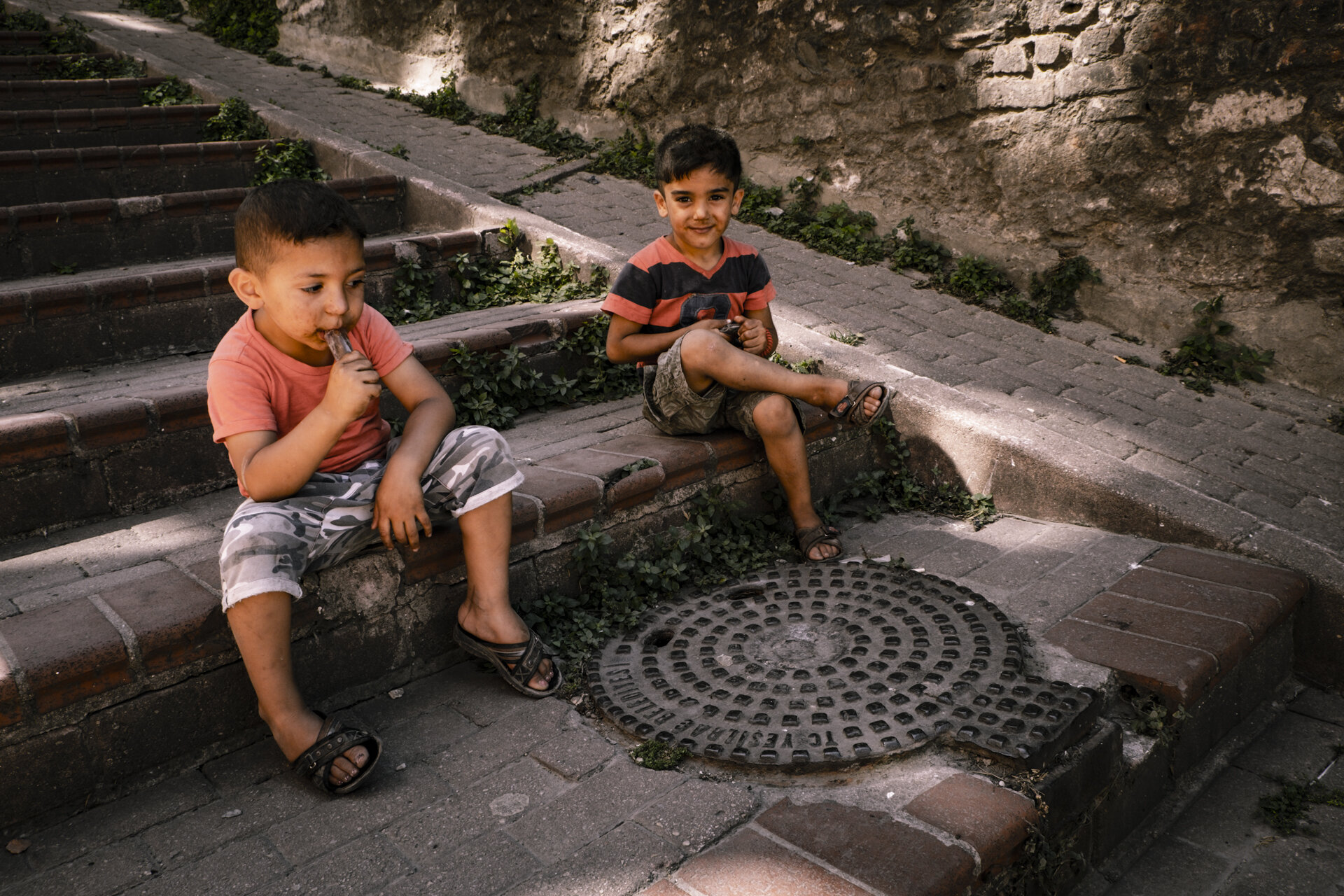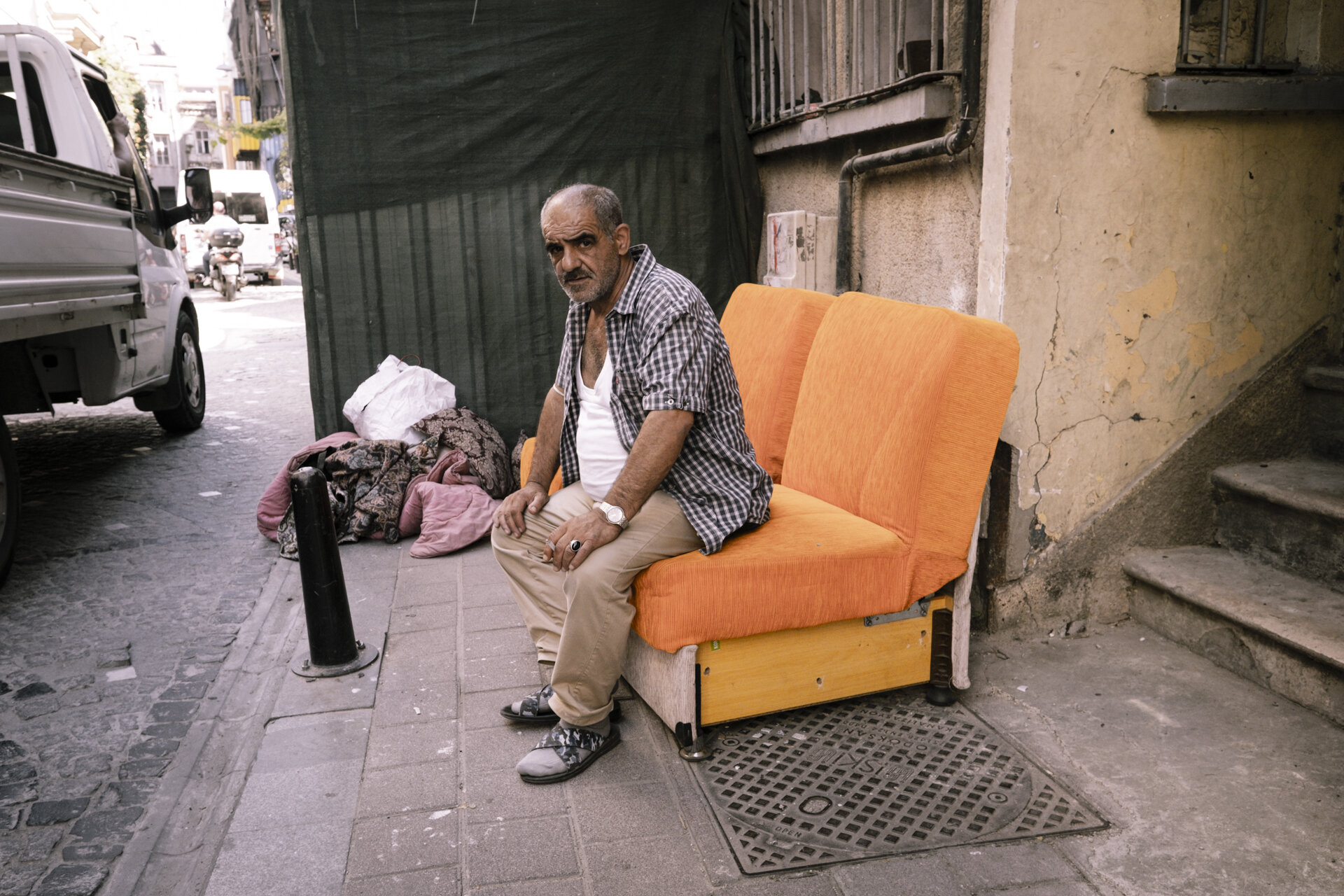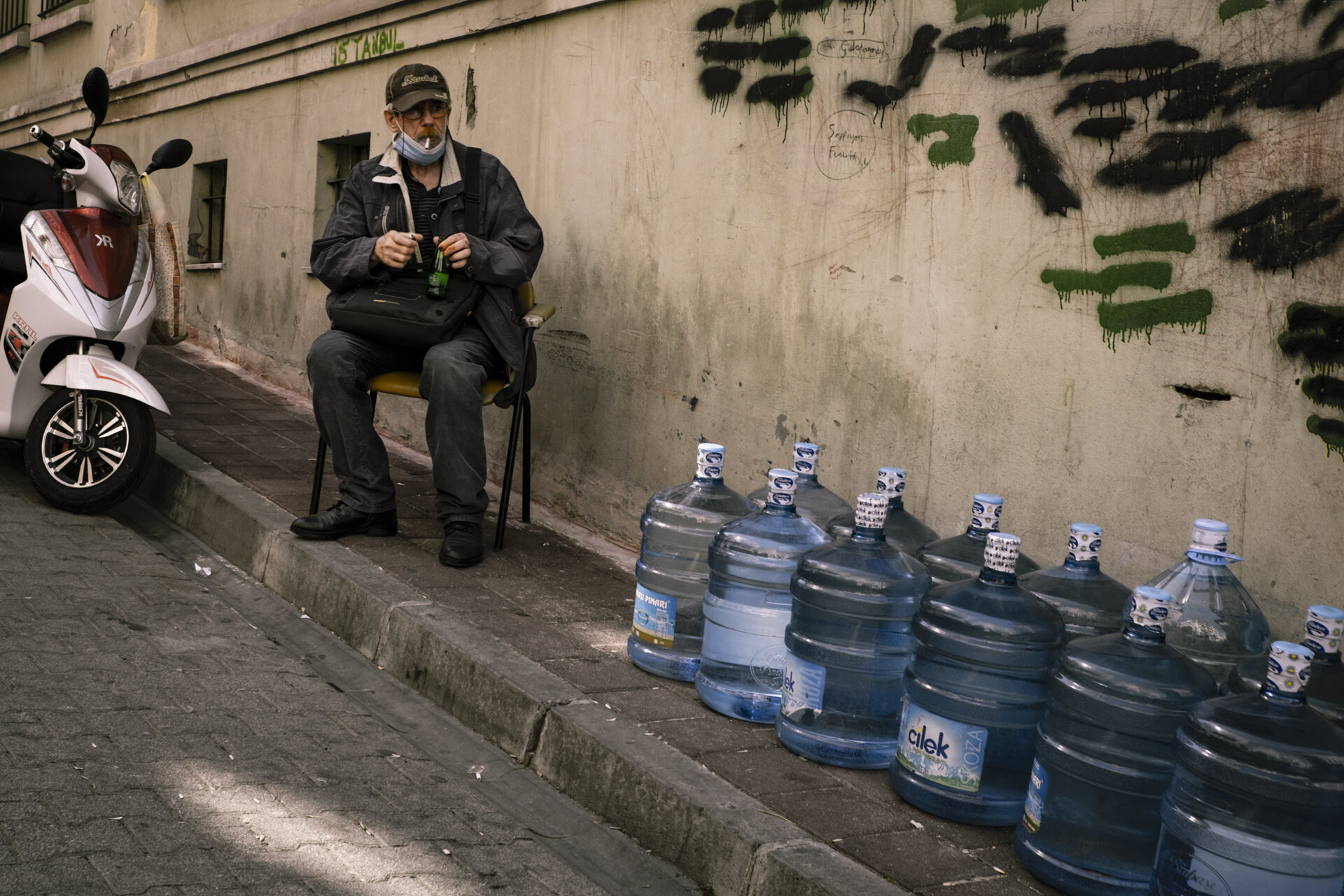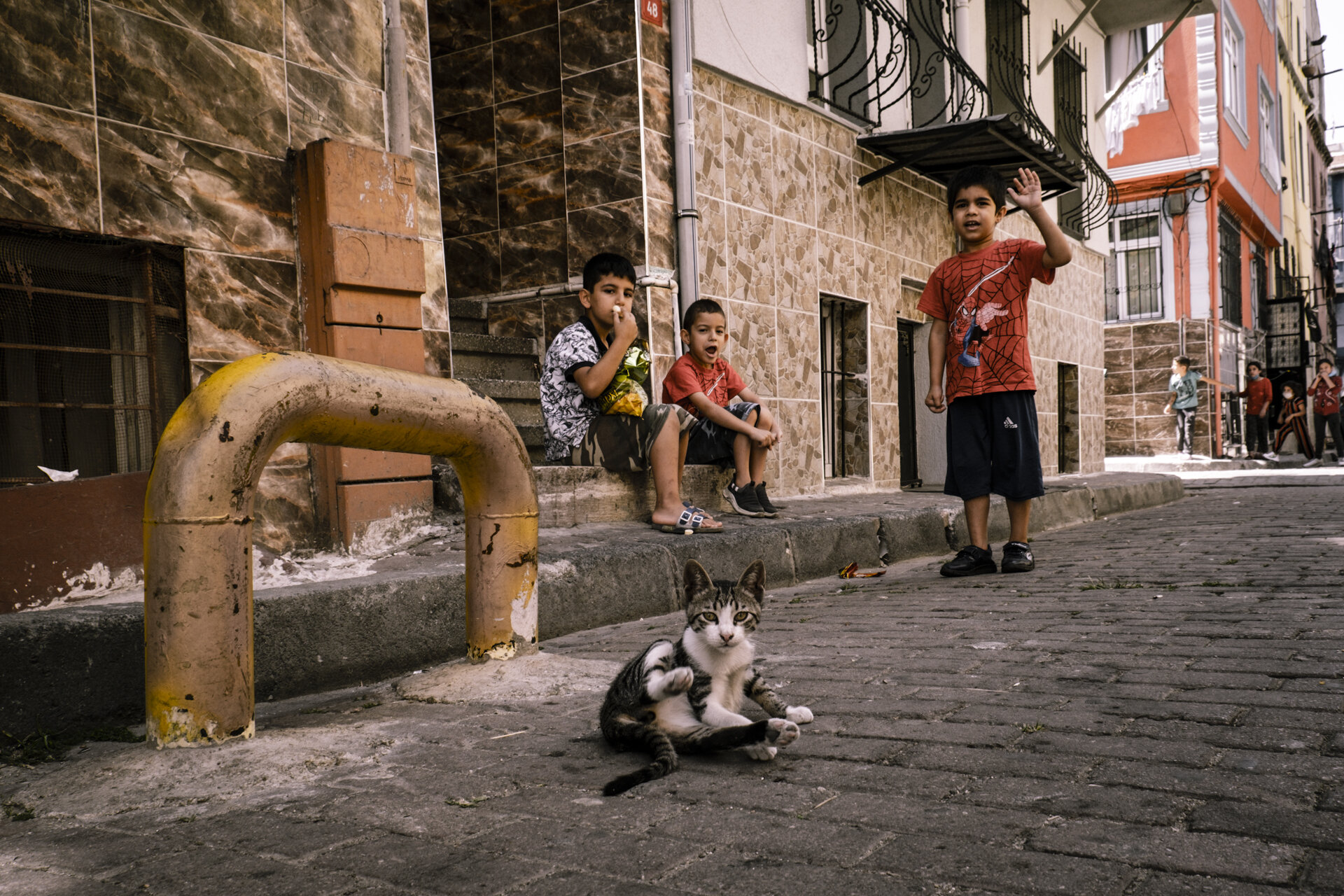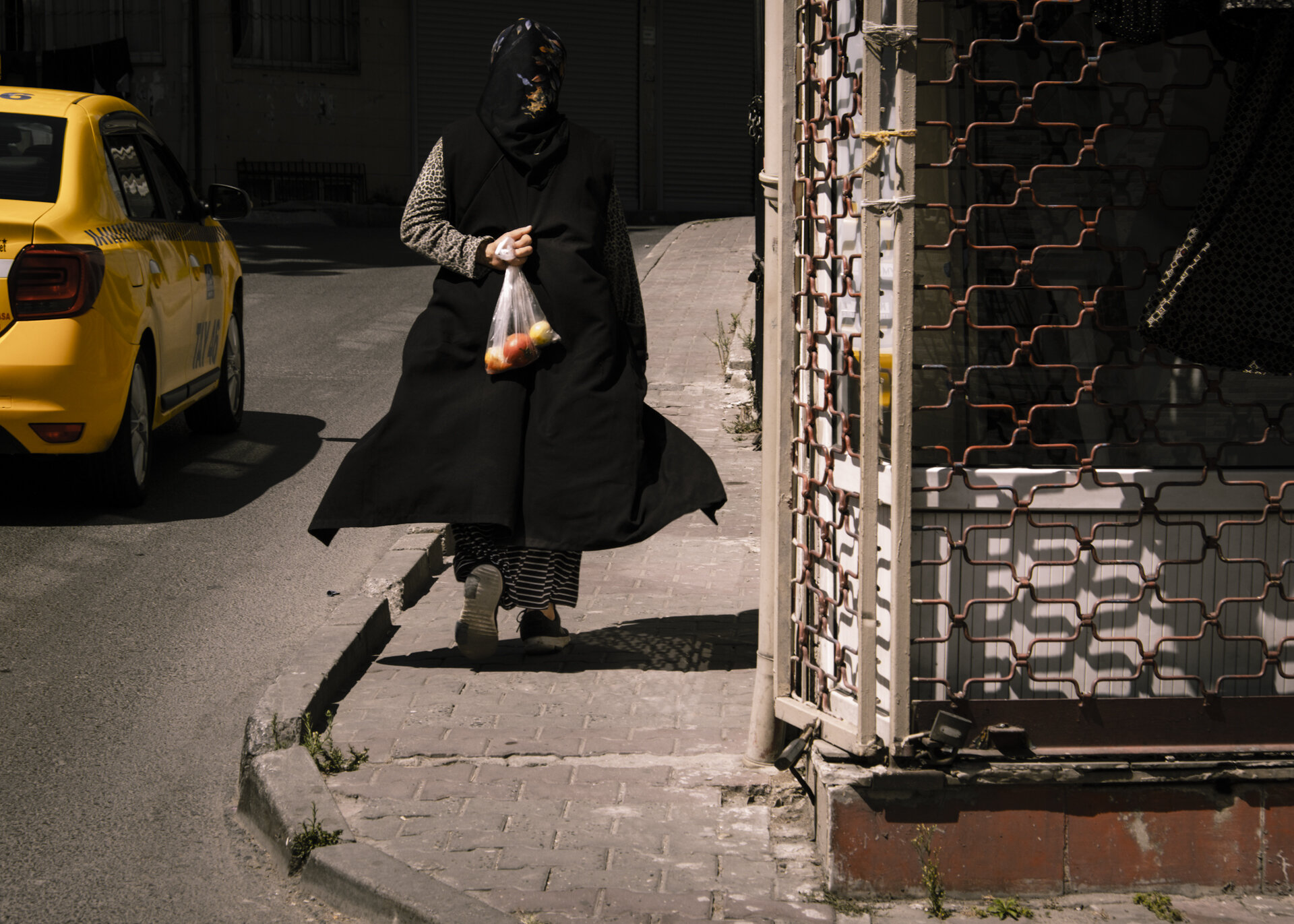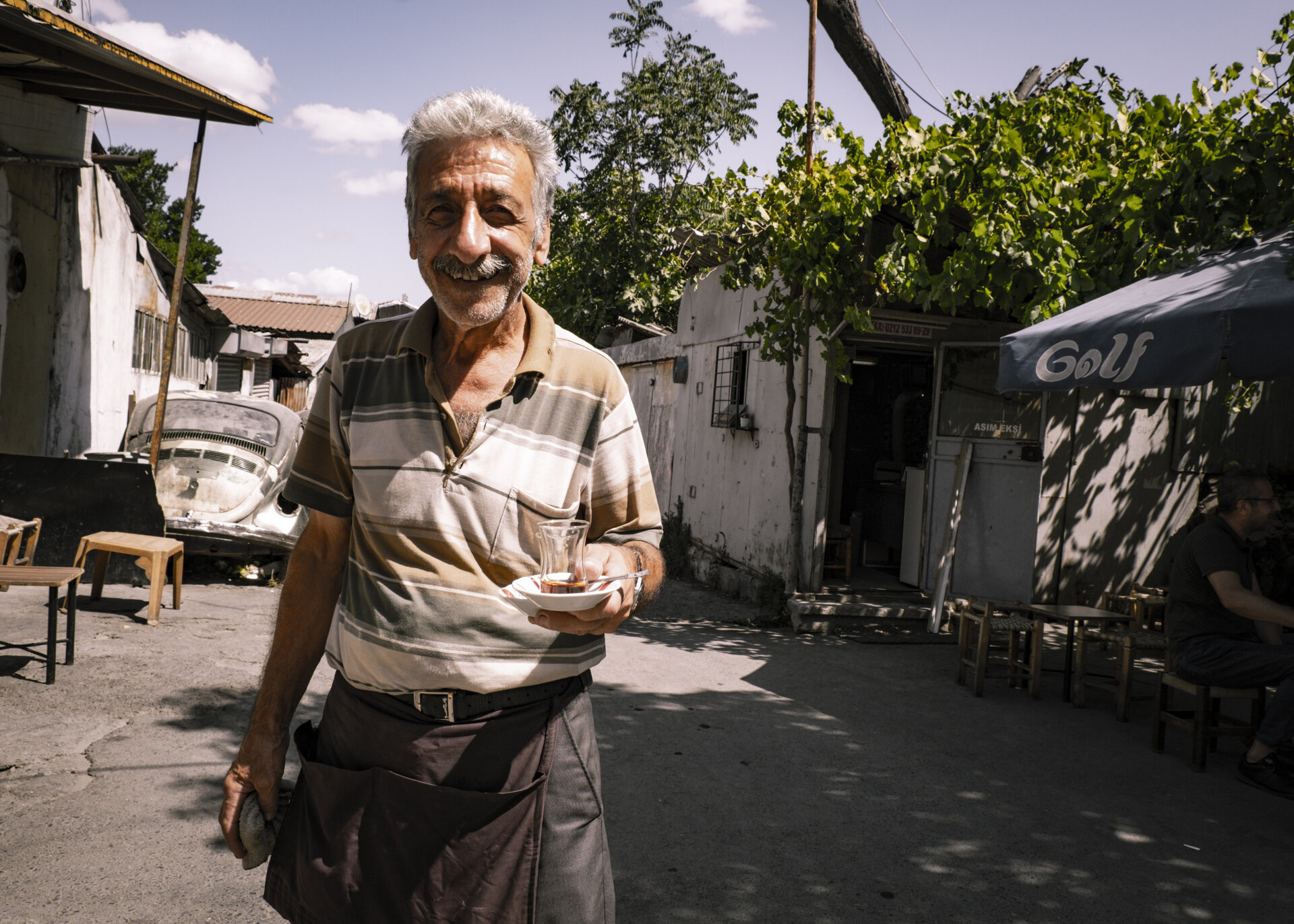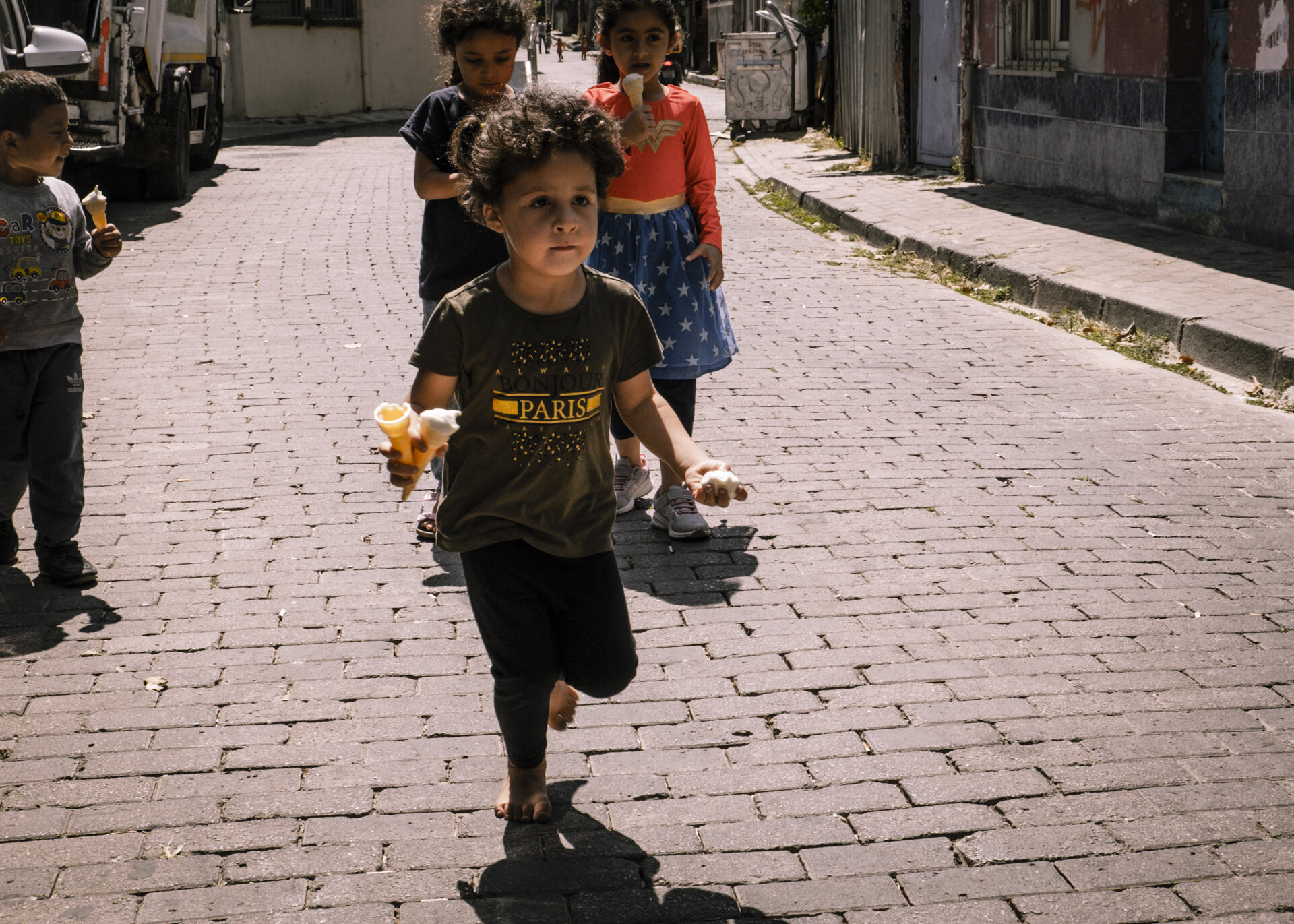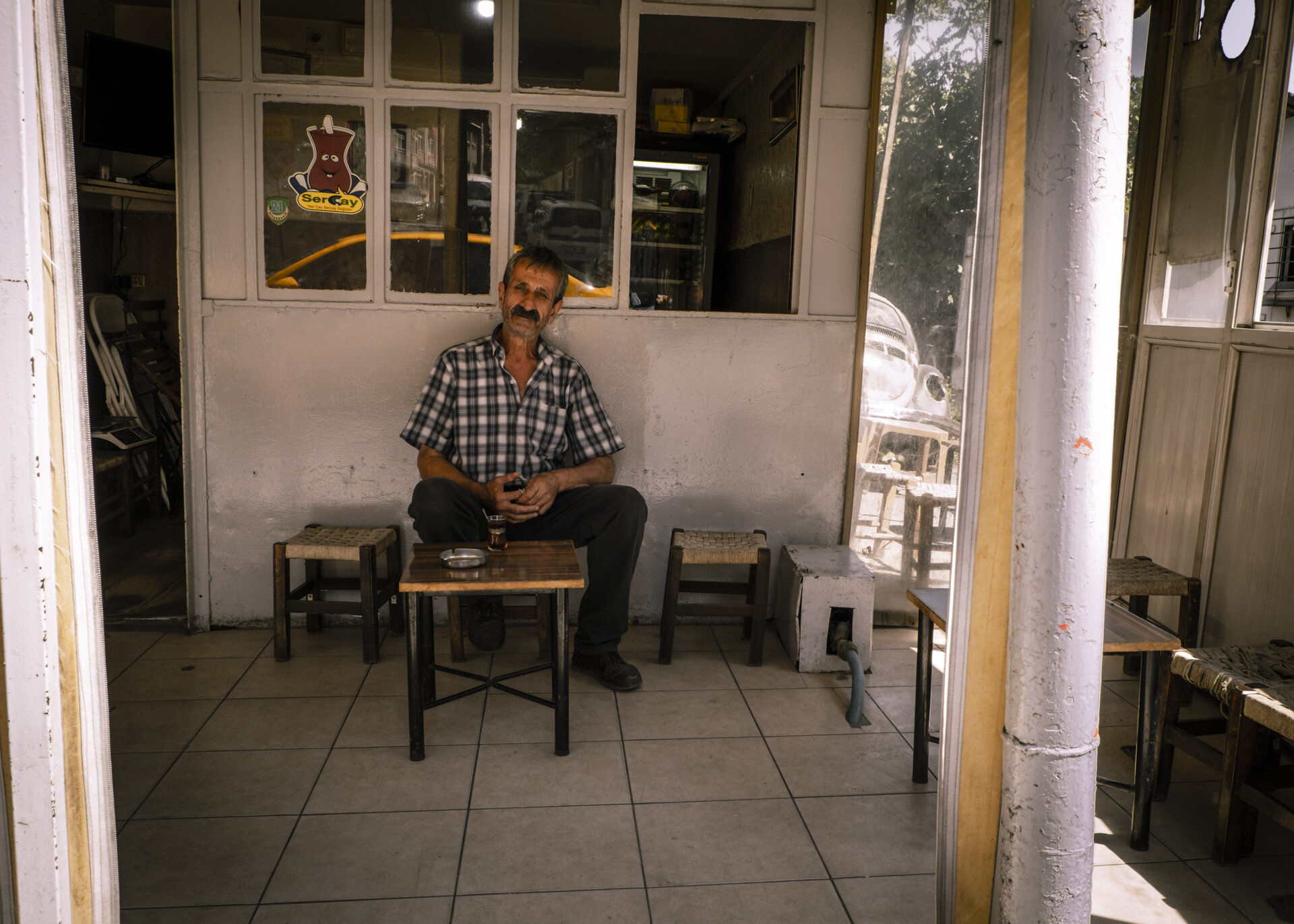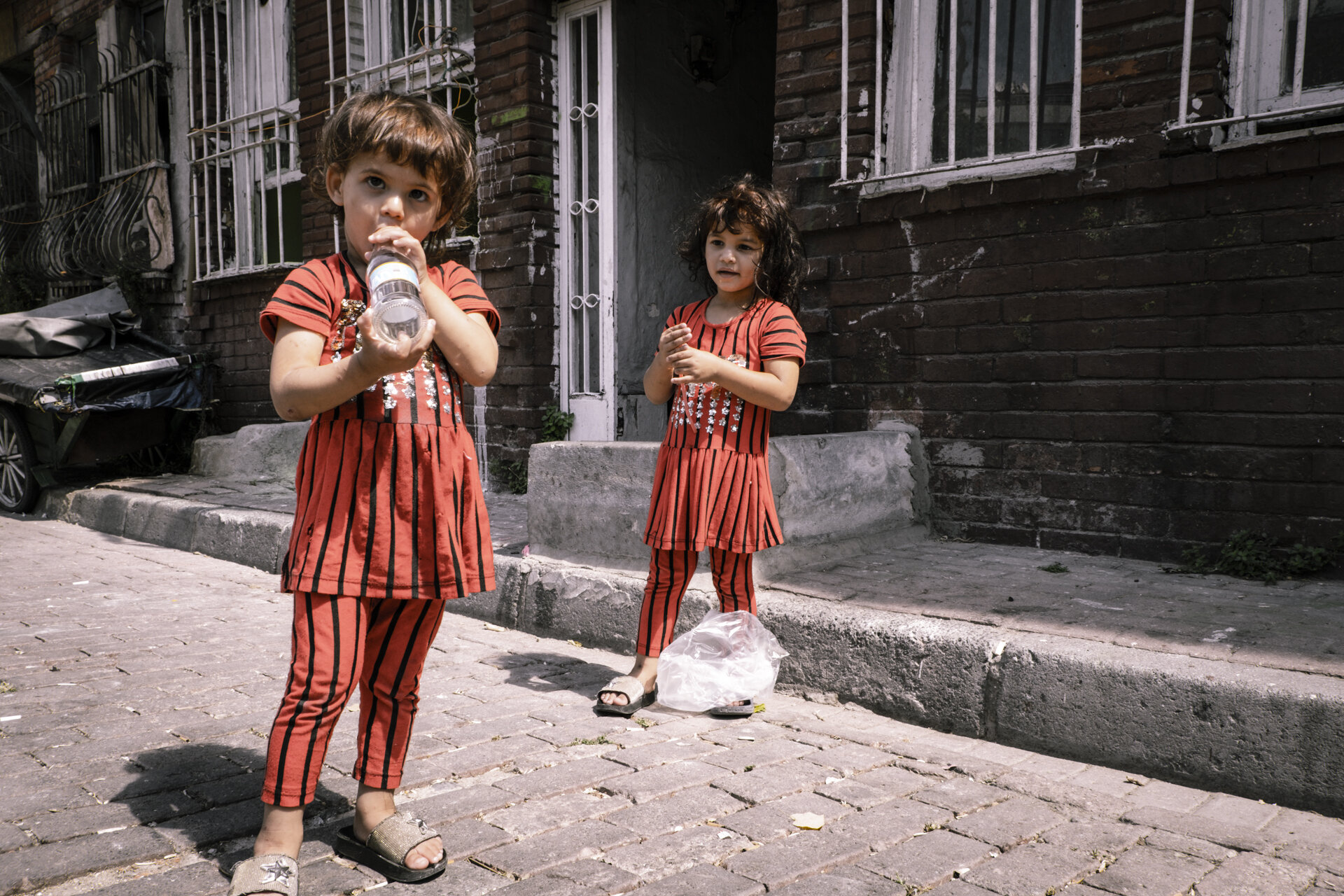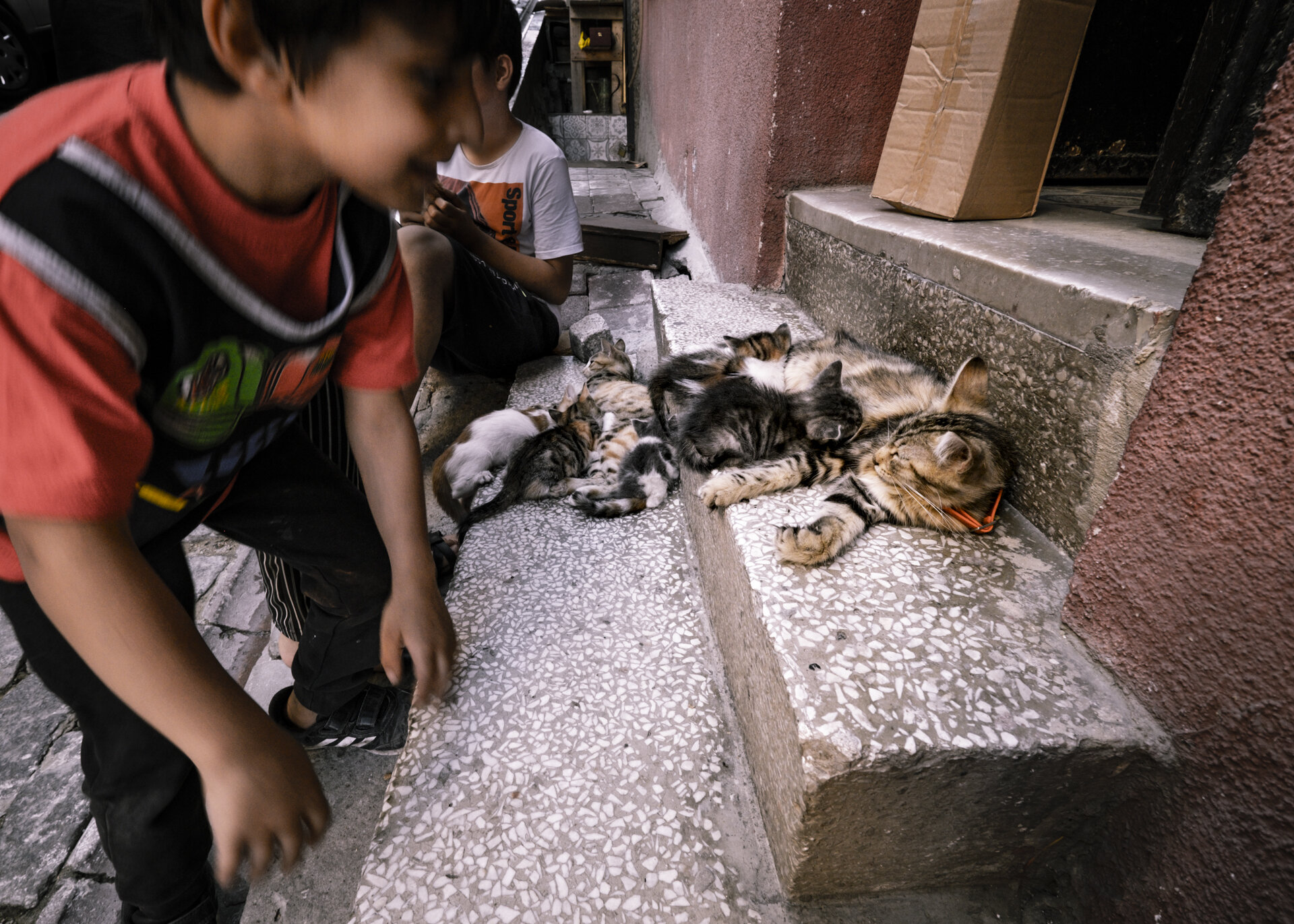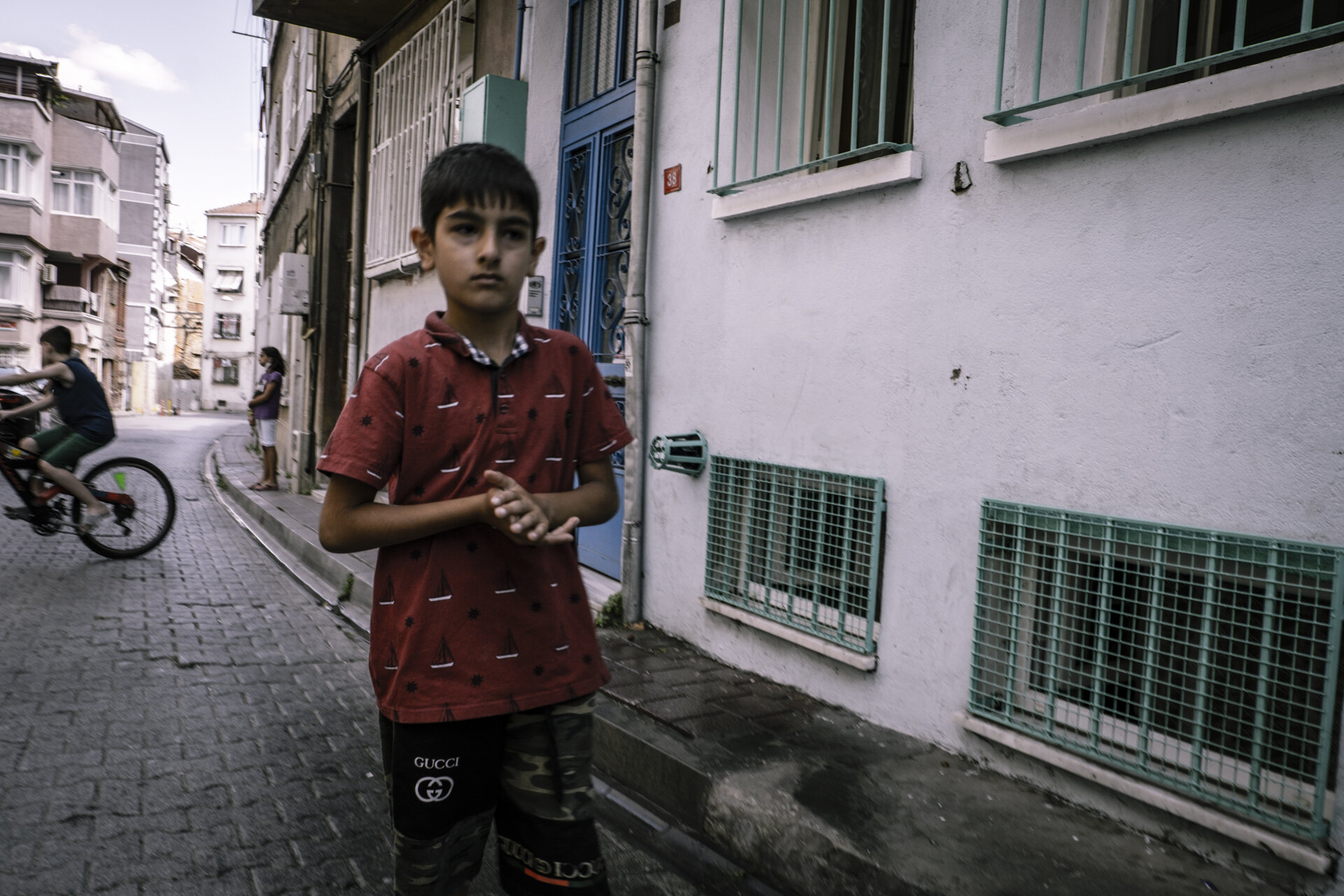We learnt pretty fast that you just go with the flow - when you cross the street, you walk like an elephant - slow and steady, don’t stop, look forward, keep moving, and trust that scooters and cars will either stop or move around you. Except Buses - they don’t Stop. You run.
Read Morecolourphotography
Your Lean, Clean Flying Machine is Ready - Indigo Airlines Tagline. Delhi Airport.
Our final day of our travels took us back to Delhi. We had unfinished business - the Lodi Colony district. At the beginning of our trip it had been closed off so this was the perfect way to spend our last day. The temperature has hit mid 20s and the sun was shining.
Always good to have a map to find your way.
With the help of various groups, including the residents of Lodhi Colony, Asian Paints and St+Art India the town mural concept was inspired by the sights, sounds and smells of the Lodhi Colony, a residential area which has now become an open art gallery for all, with its enormous murals painted by both Indian and international artists.
The otherwise dull, plain walls of buildings in the colony have been beautifully transformed into a creative ensemble as part of the annual Lodhi Street Art Festival.
Each triple-storey government-owned building features a central arched doorway and four windows where the archway offers a glimpse inside to a courtyard.
In some buildings, the archways frame the trees spilling out into the street.
I loved the way both the new and old trees of Lodhi dynamically became part of each art piece.
Lodhi Art District is home to over 54 murals that take on various themes, from social issues to environmental issues, marginalised and vulnerable communities like LGBTQ to Indian Culture and values. Many of them have been inspired by the residents and visitors of the Lodhi Colony.
Here art isn’t limited to a museum or art gallery or to the elite. It reflects an age of a generation of artists that hold the power to delivering their messages through street art.
Carnatic Cafe provided us with our final meal - the best Dosas and Sambar ever. The perfect ending as we savoured our last sights of New Delhi.
Well that’s it. Our bags are packed and it’s time to head back home to England.
Our final unexpected treat was from our plane window as we began to head home - crossing the mountain range over K2 to Kazakstan.
Its been an interesting trip to say the least, full of unexpected twists and turns and very different to our last visit to India.
Our next adventure begins in a couple of months… I hope you will join me.
How many hens will it take to kill an elephant ? Hunch advert bus stop. Chandigarh
In the north of India, on the foothills of the Himalayan mountains is a modernist’s raw concrete city from another time. Which is exactly the reason we found ourselves here in Chandigarh. Our final destination.
Following Indian Partition in 1947, Prime Minister Jawaharlal Nehru wished for a new state capital for Punjab since Lahore went to Pakistan. So the Swiss born modernist architect Le Corbusier spent the 1950s bringing concrete to Chandigarh to create "the City Beautiful”. A utopian city for both Punjab and Haryana.
A city designed from scratch to resemble a living organism, complete with head, heart, limbs and circulatory system.
Chandigarh's regimented grid layout, comprising numbered rectangular "superblocks" measuring 800m wide by 1,200m long, contrasts sharply with the chaotic feel of India's traditional cities. Roads, bike lanes, green spaces, houses, public utilities all laid out in a systematic ordered way.
You can use the drain covers to help you navigate the city.
Le Corbusier’s cousin Pierre Jeanneret and the English architects Maxwell Fry and Jane Drew were brought in to design numerous buildings under Le Corbusier's direction. He himself took charge of the Capitol Complex, the state administrative hub located in the northernmost "Sector 1", which represents the city's conceptual "head".
We were staying in Sector 17, So off we set on our Brutalist adventure and discovered the grid system in reality comprised of some very, very long roads.
The shaded tree-lined, wide roads are lined with crumbling brutalist government and police buildings. The pavements, we’ve not seen many of those in India, have various obstacles you have to navigate around and are crumbling away.
The side roads were filled with plush, suburban, modernist, Californian style highly-secured Advocate homes and offices.
To get near, let alone inside Le Corbusier’s Capital Complex, we had to navigate a series of administrative hurdles. Initially, thanks to google maps we found our way to the High Court back-door premises which was really interesting with lawyers and barristers buzzing around and court papers being transported here and there. We were swiftly escorted off the premises by the police and sent to the tourism office to arrange an official escort. Didn’t you see the signs?????
Having previously experienced India's famous bureaucratic nightmares we thought we were on a hide to nothing.
However, after presenting photos of our passports we were assigned security guards, army guards and tourism officials to escort us to the showpiece - Capital Complex - the head, the brain of Le Corbusier’s creation. This is where the government headquarters and administrative offices are. This UNESCO World Heritage Site, is made up of The Secretariat Building, The High Court of Justice and The Palace of Assembly.
High Court Justice building. The additional top roof is designed to absorb heat to keep the law chambers cool.
The visit was a whirlwind and due to court being in session we were unable to go inside or even near the signs forbidding you to go within a stones throw. Barristers meanwhile pace the grounds in-between sessions
The Open Hand Sculpture stands 26 meters high. The lower assembly area has no echo and a person speaking can be heard without the need of a microphone. The hand moves indicating the wind direction. The city's motto is "Open to give, open to receive", symbolised by Le Corbusier's Open Hand monument.
We managed to arrange a second visit a couple of days later, this involved another round of paperwork, another set of security measures and finally we were allowed a little closer to the Capital Complex buildings and even inside the Palace of Assembly and inside the Punjab Assembly room. Not without handing over bags, phones and cameras and being scanned. The inside is a glorious celebration of modernist interior design and furniture. The escorted lightening tour unfortunately didn’t include getting any closer to The Secretariat.
This sculpture is an experiment with how to get light in a building but not the heat. It’s certainly is a lot colder when you walk round the other side.
Left is the Haryana Palace of Assembly Room roof. Right is the Punjab’s roof. It was designed to let light flood in and highlight the speakers inside the room below. It has now been blocked up due to unwanted drone activity.
Palace of Assembly
Secretariat Building.
What we have witnessed is a utopian city showing more than just a few cracks. Some areas have a distinct distopian look. Many of Le Corbusier’s most emblematic concrete buildings have fared badly in the Indian summer heat and monsoon seasons. Restoration campaigns have attempted to restore some of the buildings in the city but Le Corbusier’s vision and “raw concrete” aesthetic is being gradually eroded in the process.
This is a a quiet city thanks to the no horn policy but its deafening in its overbearing signage. There is also a huge police presence. To us, as non-indian visitors it doesn’t feel like the happiest Indian city it claims to be, but we don’t live here.
It’s always worth popping into the Indian Coffee Shop - if you can get a table.
Chandigarh has apparently become India’s wealthiest city per capita. However on the other side of the coin the city now faces the challenge of overpopulation. Initially designed to accommodate 500,000 inhabitants, it’s expected to be home to 1.6 million inhabitants by 2031. Slums, as we witnessed in an unofficial taxi ride back to the airport, continues to expand outside the city, the very opposite to Le Corbusier’s dream.
Sweat is Just Fat Crying - Epic Fitness Advert. Thamel. Kathmandu
The biggest surprise was to find the population of Nepal was over 80% Hindu and not predominantly Bhuddist as I first thought. The second surprise was the quietness. This is a relatively new phenomenon. Three years ago honking the horn was banned - unless you can validate its use. The traffic police have come down hard on the road traffic causing recent protests from the taxi drivers. I have to say after India, I’m enjoying not having my ears assaulted.
We are staying in the Thamel neighborhood of Kathmandu, a very popular backpackers area. Wires are strung up all over the city, but are slowly being tidied up. Kathmandu used to practice “load sharing,” so during the day there were scheduled power cuts to help conserve energy, this has nearly all been eradicated in the major cities but you still get caught out with power cuts.
The area is just one big souvenir, trekking and pashmina shop. Cheap imitations getting caked in dust. If the pashminas were real they wouldn’t be hanging on the dusty roadside. The contents of the shops are predominately out on the street, the shopkeepers hidden inside in the dim light.
Kathmandu is very, very dusty due to brick factories, building works and unfinished roads being churned up by rickshaws, motorbikes and cars. The air is constantly filled with a haze of dust that makes the air have a golden glow.
On the face of it I wouldn’t say Kathmandu is a particularly attractive city or very photogenic. However, look beyond the main shopping thoroughfare and the tourists and it’s another story - we found interesting dark narrow alleys, buildings shored up, courtyards and a calmer view of everydaylife.
We made our way to Durbar Square as suggested by the manager of our hotel in order to witness a phenomen we would never have experienced before.
How could we say no!
With only seconds to spare we made it to an inner courtyard just as the doors were shutting. About 20 of us were locked in. There was a strange air of expectation. We were told to put our phones and cameras away, quite a few times and a few times more. Photography was not allowed under any circumstances.
We were about to witness the presence of a living Goddess - the Kumari. A living reincarnation.
An old woman appears at the window to scan the group for any photography equipment and then…. a gasp from the crowd and she appeared. A young girl, a very young girl, always chosen from a clan of the Newari community to be a living Goddess.
The bejewelled Royal Kumari stared down at us. No flicker of emotion, just stared.
Officials were touching their foreheads, praying or just gasping in awe. She will carry out this role - appearing at the window each day- until she reaches menstruation age then she will no longer be a goddess and will be integrated back into society.
Throughout her Goddess life she has to pass ritual tests and be inspected for 32 specific attributes of physical beauty, including a neck like a conch shell, eyelashes like a cow, a chest like a lion, and thighs like a deer. Her eyes and hair must be black. And she must be brave.
‘The-would-be Kumaris are kept in a dark room with slaughtered buffalo heads while men dance around to monitor their levels of “fearlessness,” says a former Kumari, Rashmila Shakya in her autobiography, From Goddess to Mortal. She found the transition from being living goddess to just another girl was emotionally challenging.
Apparently Kamari tradition is frowned upon by child protection groups.
Once the Goddess had gone back inside we were allowed to take photographs then the doors were unlocked and we were set free. Well the hotel manager was right, we have never experienced anything like that before!
There are a number of beggars, but, although not rich, people do give to the most needy.
We climbed up 180 steps to the Swayambhunath temple, also known as the Monkey Temple. Swayambhunath sits high on a hill overlooking the Kathmandu Valley, it was relatively quiet and peaceful here, and the temple is beautiful.
While the 2015 earthquake was devastating, it didn’t change the heart of the city. Much of the city escaped the damage too, while the ancient parts that were hit still live on with all the character of Kathmandu. It’s not a place you can really compare to any other. While it does possess a chaos somewhat similar to India, everything else about Kathmandu is too different to really compare.
We really liked it here because of the the people. The Nepali people are very welcoming, polite, and friendly and they went out of their way to make our visit very enjoyable. It is often said that people first come to Nepal for the mountains, but return for the people.
That will most likely be true in our case!
In the meantime it’s time to pack our bags and head up the mountain.
You Are Exactly Where You Need To Be - Cafe Sign. Panauti. Kathmandu Valley
Hello Nepal. Well this feels different!
Outside of temples and a starting spot for mountain trekking, I was going to Kathmandu without any real knowledge of the area. Immediately upon arrival from India, it felt different. Calmer, quieter and less chaotic.
Surrounded by incredible scenery, Kathmandu has a unique and interesting character to it when walking around the city. There’s a ruggedness to it. Many of the streets are dirt roads, the buildings aren’t in the best shape and the architecture and temples all over the city give it its own identity. There’s a mix of Nepalese culture and modernity throughout the city, while feeling you are still far away from a more developed urban life. Since the country has become government run, buildings higher than 2 storeys are now permitted. A new building era has begun.
Roads are unpredictable, Power-cuts randomly happen, it’s all part of the experience. Everybody is smiling. But before we explore Kathmandu any further we took a jeep ride out of the city.
As we made our way out of the city, brick factories and rural developments give way to rice fields on the way to the hillside village of Panauti.
Panauti is still regarded as one of the oldest towns in Nepal. It offers a poignant look at the passage of time. The crowded bus-stop in the sprawling mess of the new town gives way to small brick streets leading through a once prosperous, trading medieval city with a relatively small temple at its centre accompanied by an antiquated yet charming museum. The main visitors here, it appears, are a multitude of pigeons.
With the exception of a few motor vehicles there seems to be little evidence of modernity. Washing is done in the river, cement is made by hand, wool is hand-spun and wood is hand-carved.
Earthquakes and age have taken their toll on the village but some building renovations are underway. The tiny, lopsided doorways, hand-carved wooden structures and wonky, subsided brickwork provide a historical backdrop to the day to day chores of everyday life.
Our next stop is Bhaktapur…
Small or medium you are always ‘XL’ for us. - Federal Bank Advert. Jaipur
One misty morning we headed 10 kilometres out of Jaipur’s city centre to find the Monkey Temple.
We were greeted by goats, cows and of course monkeys - in abundance.
As soon as we pitched up 2 young brothers introduced themselves and offered to be our guides and protect us from the monkeys - all for the equivalence of a pound. How could we refuse?
Rishi and Naran were good guides, they loved the monkeys and helped us avoid the Babas’ who try to rip you off. Rishi was especially good with the monkeys and wanted to be a vet, but I guess life won’t give him that chance. He told us about all the animals and birds we saw and showed us videos of leopards which they had seen on the path we walked. Thankfully we did not meet them. There is known to be 46 leopards living in the locality, they come into the temple area to hunt the dogs and monkeys.
As we climbed up we passed lots of the local children kite-flying into the mist.
There are many temples within this mountainous site and a natural spring that flows down from the hilltop. The water from the spring fills up many water tanks which are considered very sacred and the pilgrims visiting the temple bathe in the holy water.
A newly married couple were on their way to the temple to be be blessed.
The boys were clever and tricked us into buying them dinner, but for 20p we thought it was funny. Telling us we had to pay the Baba a small fee for the temple, which transpired was a small bowl of Dahl for them each.
The boys were actually working for a gang who were operating as you went in through the gate. However, they were so charming and this is all their life is right now, we were more than happy to pay them well and enjoyed their lovely company and everything they taught us. At the ages of 14 and 12 life has forced them to grow up too early.
The monkey’s cheeks are rammed with the peanuts we fed him.
So now it’s time to bid farewell to Jaipur and all its wildlife. We throughly enjoyed our time here.
There's No Craving a Thali Can't Fulfil - India Food Bus Advert. Old Delhi.
On our way with Mr Tuk Tuk to Chandni Chowk, Old Delhi we had a girl selling roses. We had to buy one, it’s a terrible racket, the bosses of these sellers take all the money, the girls cant go home until they’ve sold them all.
Since we were last here, Plans to pedestrianise the 1.4km stretch of Chandni Chowk began in 2021 with a big development programme the first being - No motorised vehicles only cycle rickshaws, allowed between 9.00 - 9.00pm. This first has has almost all but failed. The council were only allowing 400 licensed cycle rickshaws in the area , but now there are over a 1000 as the drivers can make a weeks money in a day. The tuk tuks, motorbikes and auto rickshaws are back in full force apparently with tickets being issued to the drivers for breaking the rules. The pedestrians have been pushed to the pavements, unfortunately they have been dug up and you have to clamber over the rubble. Subsequently it’s still as chaotic, still as noisy but still as charming. Old Delhi is a sight to behold, a tangle of old streets and alleyways and complete mayhem.
Cycle rickshaws are very labour intensive, sometimes all you can do is push them.
The Spice Market, was in full swing this time around. Upstairs is the large scale trading of chilli’s. The air is thick with the smell. Once that chilli gets hold of you, you can’t stop coughing and sneezing. Chai is frequently passed round to ease the stall holders coughs.
The dedicated areas have a ridiculous amount of shops and are full to the brim - you can buy everything and anything here. Wedding, household, food, clothes - the list is endless.
We tried a few eateries and had the tastiest food. I think our favourite was Giani’s. Our plates food cost the equivalent of 90p - we had the one at the top of the menu - chickpea curry on bread.
Very tasty fried potatoes
Making Chai
As the day drew to a close we popped into the Gurudwara of Sis Ganj Sahib. We listened to the prayers.
It is the martyrdom site of the ninth Sikh Guru- Guru Tegh Bahadur who was executed here. Hence its name Temple of the Beheaded.
Since it was getting towards the end of dinner and a little less chaotic, they feed approx 35,000 people for free in a day, we went to the kitchens to see the giant vats where all the food was prepared. we were offered dinner, but we were so full from trying so many dishes we unfortunately had to decline.
The final area we went into before retrieving our shoes was the cloakroom. Here a group of volunteers mend and clean the visitors shoes should they need it, all are of charge.
Farewell Delhi, we are now moving on to Jaipur…
My Ghosts
After experiencing the idiosyncrasies of the Black and White Fujifilm FB3000B during our period of Lockdown, I decided it was time to explore the colour expired version: Fujifilm 100C. It demands a sunny, bright day at only 100 ISO and contrasting colours to enjoy its full impact. So with the Land camera’s light meter; if you can even call it that, not really working, the day being pretty dull and the film pack dating back to 2006 nothing was really going in my favour. But as ever, Polaroids and Peel-Apart film are not just about the instant photo for me, there are an abundance of treasures to be found.
Using expired colour peel-apart film produces a unique layering of image making. On my black and white peel-apart negatives The Pull, removing each film from the camera, left random, permanent light streaks interacting across many of the images. The pull on the colour negatives however, behaves in a completely different way.
Depending on the physical speed, flow and strength of the pull the negative is marked with a white substance. A purely physical fleeting act translated into a static moment of time. There is little control over the results and the outcome is purely random. Once the back layer of the negative has been bleached away a partial image emerges, not dissimilar to a photogram or a glass plate negative, but the physical action of the pull has transposed itself in an ethereal and spiritual nature. Once the front of the negatives are cleaned the marks of the human interaction will be washed away. My Ghosts express in visual terms the idea of human presence that was only momentary leaving only traces of its existence.
A Purr-fect Place to Sit.
During a recent post-lockdown visit to Istanbul there was one district located on the fringes of the city centre that I instantly fell in love with. The residential area of Balat and Fener, situated in the Faith district.
While the neighbourhood was historically considered the Jewish Quarter, it’s now a mosaic of Jewish, Christian, Orthodox, and Muslim communities. A large proportion of the Jewish community left after the birth of Israel and most of the Greek families fled after the Cyprus dispute. From 2003 a renovation programme began and at the base of the neighbourhood you find a developing young vibe and a flourishing string of cafes, antique shops and artisan workshops. This however, is one of the few places where the residents still outnumber the tourists along The Golden Horn.
If you climb the steep network of cobblestone streets behind the vibrant wooden facades that show signs of much needed renovation, the visitors disappear and a different scene altogether awaits you. Vignettes of the old Jewish and Armenian homes, coupled with a quieter, slower pace of life in contrast to other bustling districts of Istanbul.
The streets are filled with children playing, locals drinking tea and laundry hanging from house to house intermingled with Turkish flags, many paying homage to Ataturk.
Look a little closer and you find an abundance of chairs on the streets waiting to be occupied by the locals, as well as a large quantity of stray cats who have taken up residency enjoying the plentiful food, peace and the availability of comfy seats.
Many faded painted homes have been tagged, many with declarations of love. The sunlight casts a golden glow, but the narrow streets are cool and sit in heavy shade. Perfect for sitting and watching the world go by.
At one point, we were spotted sitting on the curb eating fruit and it wasn’t long before we were given chairs and served tea by the gentlemen of a football club - a meeting house where they would regularly gather to watch a game on the TV.
We were welcomed by such a beautiful and culturally diverse community, what is there not to love?
'Mushroom Face Sandwich'. - Google Translate Lunch Menu. Tokyo
Geek central, Akihabara is Tokyo’s biggest hub of all things Japanese. Condensed into a 6-block radius - electronics, arcades, claw machines, stores selling weird items, maid cafes and neon. The neon is busy and bright and quite a spectacle.
The maids are out in force targeting the guys. Their menus offer a set price for all you can drink in a said time scale, as well as offering ear-waxing and relaxation.
The young girls are freezing, look really miserable and you have to ask is it really worth it? And the guys, paying to sit in a maid bar? Japan’s society is suffering with a lack of relationships and this seriously can’t be helping.
Jonny Monsoon struck once again …
As the rain lashed down on Tokyo we embraced the grey skies and umbrella-snapping winds and went to see the infamous Shibuya Crossing. The only place where 7 crossroads come together and the lights all turn red simultaneously and thousands of pedestrians all cross at the same time. Perhaps not quite the busiest time of day and not quite the spectacle that I’m sure it can be, we did manage to locate a tourist free empty cafe overlooking the crossing - quite an achievement in itself.
We were however, fascinated by the static crowd of photographers with tripods all taking the same image from the same standpoint, the amount of selfies, vloggers and even tripod selfies.
Shibuya selfie - this is taking vanity to a whole new level.
I was happy to take advantage of the rain, umbrellas and people on such a dull wet day. I was pleased to find the subway glass entrances had signs of graffiti on them, something you don’t see here very often.
Almost home time…
A bit of Christmas shopping to round off the day, Tokyo style.
'We want visitors to get lost rather than follow the order'. - Quote - Toshiyuki Inoko. Founder of Teamlab.
Good Morning Tokyo, our final destination.
After a wild goose chase We rocked up at our 20th and final bed of the trip only to find we couldn’t get in. Thanks to nimble hands and a pen we managed to retrieve the keys from a locked box. Our traditional Japanese one roomed flat had a certain 70s feel so we knew it was past its sell by date, but it was fine. Until that is the people upstairs came home in the evening. Then the thin walls reverberated every word and footstep around us, then 8.00am every morning the scaffolding company over the road loaded their trucks. Funny how some things are never mentioned in reviews. The location was great and nothing was too difficult to get to.
One’s not enough.
Here in Tokyo, I began to feel as though we weren’t in Japan anymore. It was the same, but different. Same city mind-set but without the historical beauty or skyscraper magnitude like London and New York. Tokyo is vast, impersonal and digitally noisy but humanly quiet.
We must have only scratched the surface in our week here, but slowly we dug and discovered there was more.
The cleanliness is there, as is the order but it’s a little less rigid. The Christmas lights added a warmth to the neon overload. Everything is bigger here: the shops, crowds, stations and the crossings. We saw some bizarre labelled fashion, but we thought there may be more extremes and creative looks but we didn’t see much evidence of this, its surprisingly bland and predictable, I guess thats globalisation for you.
This is the front.
This is the back!!
It appears to be the latest trend to wear matching outfits.
The Cosplayers add an alternative look to the branded market.
The ride out to Palette City, near Tokyo Bay was spectacular both in daylight and night-time. The views were amazing as you looked back at the city. Then we discovered Teamlab…
The new Mori Building Digital Art Museum: TeamLab Borderless, sounds a bit dull and a bit of a mouthful, fortunately its a concept that belies its name. The world’s first digital museum of this scope and massive scale. 10,000 square feet of it. A totally immersive and interactive experience created by TeamLab, a fast-growing Tokyo collective of so-called “ultra technologists”.
Home to about 50 artworks loosely divided into five areas, orchestrated by a network of 520 computers and 470 high-tech projectors.
Like many elements in Japan, their Art museums are bound by rules, but this place is a change from the norm. Here there are no borders, the art moves with you, as you wander aimlessly soaking in the mesmerising fluid displays in forests, seas, fields of flowers and much, much more. Within all the technology it remains tethered to reality, whether its the change of seasons or when you touch a fluttering butterfly, it promptly dies.
Teamlab say the “borderless” concept is what the real world is like. they want visitors to get lost rather than follow the order.”
The slow shutter speed made the hares appear exoskeletal as they jumped down the corridor with you.
Apart from William Kentridge’s - 'More Sweetly Play The Dance’, this was a breathtaking experiences. Links to Japan’s nature, art and culture are evident in most areas and makes the experience even more unique. The term ‘Museum’ is perhaps a misnomer. this is a digital installation and a very fine one at that.
'It’s dangerous to walk whilst using a tablet'. - Train rules. Kanazawa.
On Japan’s west coast facing the cold winds of Mongolia is Kanazawa. Our penultimate destination. It was kept off the tourist map for a number of years, but thanks to the bullet train it’s now easily accessible. It’s very compact, a smaller version of Kyoto and a lot colder.
Our authentic bijou, traditional Japanese Air BnB accommodation turned out to be a container unit. Lined with tatami mats, it was actually quite cosy once the heating was on. Unfortunately the bathroom was almost inaccessible. The walls and windows were paper thin - a typical example of Japanese short-life building.
Higashi Chaya is a whole neighbourhood of beautifully preserved geisha houses. The geishas have now left and their houses have become restaurants, teahouses and many identical souvenir shops. There are many kimono wearers to be seen wandering around the town, but these are all rented ones.
Kenrokuen Garden is almost 30 acres and forms the green heart of Kanazawa. It’s ranked by the Japanese as one of the three perfect gardens in the country and ‘it’s a fine place for a peaceful and contemplative walk’.
Kenrokuen means “six attributes garden,” which is a reference to a Chinese book that describes the six attributes of the perfect garden. As you wander around you discover perfect viewpoints, traditional teahouses and water used in different ways, all tucked away. It is not the size that is breathtaking, its that every angle has a truly amazing view, almost in a surreal way.
It was perfect. Perhaps a little too perfect?
Throughout Japan’s towns and cities almost every bush and tree has been perfectly manicured or trained to grow in a particular way. Surely the beauty of nature is nature itself?
Digital birdsong in a garden with no wildlife, except for coy carp, is a complete mystery to me.
The garden has tea-ceremonies performed in the traditional teahouses. They are a bit strange to see - there’s multiple ones going on simultaneously. The buildings shutters are open so all the tourists can watch the tourists having a private ceremony.
But the uniqueness of Kanazawa we found were its conical trees. A visual spectacle like nothing we have seen before.
As the colours of autumn foliage deepens, November 1st hails the beginning of the winter preparations. Its a very labour intensive busy spectacle called Yukizuri.
Snow that falls in the winter of Kanazawa is heavy in weight because the snow contains a large quantity of moisture. In order to prevent the branches of the beloved Karasaki pine trees from breaking, Yukizuri is performed. This is a method of protecting the branches with ropes attached in a conical arrangement to the trees. Skillful gardeners use more than 800 ropes to give Yukizuri to the pines.
Gardeners on-top of the supporting poles throw out the ropes one by one until perfect cones of ropes are formed. Work continues round the city to mid-December; the Yukizuri ropes are left in place until March, when the heaviest snows finally stop falling.
It adds a surprisingly elegant touch to the garden’s winter scenery.
All around Kanazawa, these conical forms are being erected over trees, hedges and bushes . The great walls of the castle are also covered in woven matting to protect the stone. The town is literally wrapped up for winter.
How I would love to see this place in the snow, we were so close, it is was very much colder over this side of Japan. We were, however, pleased to see the colours of late Autumn.
In complete contrast, Kanazawa is known for its fresh fish and Omichi Market is where the locals all go in the mornings before the tourists arrive. The harsh fluorescent lighting indoor lighting and the shouting of the market traders makes this a completely different visual experience.
So we have reached the final leg of our unforgettable journey. Our last ride on the Bullet Train to our final destination - Tokyo.
'Live Like a King'. - Used Brands shop slogan. Takamatsu.
There are many glossy internet write-ups about Naoshima, the art island, with reference to its architecture and art museums.
Well, from our experience they are pretty far off the mark. The art played second fiddle to the beauty of the island.
Naoshima Island supposedly has a reputation as a ‘Mecca for art devotees’. We visited on a Monday knowing 4 out of 5 galleries were closed. But, as informed, there were many outside installations and the stunning Benesse Art Museum to see. Teshima, the sister island’s galleries were also all open.
So off on the ferry we went.
Refreshment stop
What we found, is the ferry company doesn’t run enough island connections to enable you to do both islands in one day - unless you’re a hotel guest, then you can.
We choose Naoshima island because we could see Benesse House, outside art installations and hire bikes and cycle round the whole island.
What we found when we got the bikes was that’s not possible - unless you’re a hotel guest, then you can.
To see the many outside installations you had to leave your bike and walk. The installations were only the examples mentioned on the internet and while they were fun, they had become teenage selfie centres. Yayoi Kusama’s ‘Pumpkins’, being the main contenders.
Each of gallery’s carry a hefty price tag. Chichu Art Museum is the most raved about with a fee of £35. But it was closed.
Benesse Art Museum is a stunning concrete homage to brutalist architecture, that’s where it ends. This was not a curated art museum, this was a private collection. An incoherent small group of artwork, that had been randomly acquired. They had no narrative and bore no relationship to each other or the space around them. Except for Hiroshi Sugimotos seascapes series - presented in an inspired setting but access into the space was denied. You probably had to be a hotel guest.
Before we knew it we had covered the entire space and seen everything. We left the gallery feeling underwhelmed.
It reminds me of how wonderful Yorkshire’s Wakefield Sculpture Park is. Free, huge and staggering in its wealth of artistic brilliance. I can’t help but feel how lucky we are in The UK.
Hiring the bikes was brilliant and made it such a lovely day. The higher we climbed the more amazing the views. One minute we were bathed in glorious sunshine then the next it went black. It was like a piece of theatrical art, as we watched a storm approaching from behind the islands.
The lightbox looks so wrong that I like it.
The islands across the water look beautiful. Like nothing we have ever seen before. They are worth returning to another time. But, Naoshima is not a ‘Mecca for art devotees’, the art is the expensive sideshow.
Road mirrors for the Art Museum Bus came in handy.
We got the high speed ferry home having saved potentially £200.
'Please refrain from acts that are annoying to others'. - Food-Court Rules.
As previously mentioned, another reason to travel over to Nagasaki was to go and see the Sumo Wrestling.
We bought our tickets in England as soon as they were released about 8 months ago. As promised, our tickets were waiting for us at our hotel when we arrived. We travelled two hours to the city of Fukuoka to watch the tournament that everyone over the age of 40 appeared to be glued to on both TV and the newspapers.
Waiting the arrival of the Sumo Wrestlers
Sumo wrestlers are a lot like geishas, in as much that both their professions occupy all aspects of their lives. They have to live by rules that dictate their daily routines and decorum in and out of their sumo stables. As far as clothing is concerned, they are required to dress traditionally whenever seen in public. Interestingly, the specifics of how they are dressed is determined by their rank. For instance, lower ranked wrestlers only get to wear Yukatas even in winter. Sumo is a sport steeped in history and is still closely associated with its Shinto principles.
Inside, around the sacred arena, everyone sits on tatami mats or raised cushions in marked bays. Everyone takes food, beer and a few banners to hold. This is a long day and everyone takes supplies into the arena with them.
Oh my goodness how the ladies love the Sumo. In and out of the stadium, they were shouting, clapping, cheering and waving their banners. They queued behind the restriction tape desperate to get a photo of their favourites sumos. The men took a quieter approach and drank lots of beer.
Crowd control.
Unfortunate losers has to leave early.
Sumos are banned, by the Sumo Association, from driving their own cars.
Our day at Sumo was fascinating and very entertaining. It is potentially a sport with an uncertain future, as the harsh lifestyle makes it more and more difficult to attract new recruits.
So it’s farewell to Nagasaki. We are off to Hiroshima next.
‘Playful Hemlines’ - Ladies clothing stall slogan
Here in Udaipur, The city’s major buildings are being restored, new lime wash is applied over renovated marble and concrete and polished to make the walls gleam. All done by hand. The manual labour here continues to be intensive. Modernity is happening slowly, Water and waste pipes are beginning to be buried underground, all manually done. Soon the electricity cables will be put underground too. There are big plans for this city. Huge expensive hotels are being built some distance from the centre, but behind the scenes there is so much rubbish and discarded materials with no infrastructure or inclination to clean it up. Nothing ever looks finished.
Burying the pipes.
Wandering through the narrow back streets of the old town, houses have deteriorated and simply fallen down and subsequently become refuse areas.
It is here you will find small single businesses like tailors, steel pots, jewellery, milk, flour and food all being hand made with the most basic of tools and little or no power. They work late into the night - highlighting another issue that really needs changing. The hours that people work is so intensive and wholly unacceptable. Leaving little or no time for rest, relaxation and family time. There is very little evidence of leisure in these towns, except in the Palace.
Brass pot makers
Jewellery maker
Barbers shop
Since being in India, I have been disappointed by a number of issues in Rajasthan. The one that has really affected me is the issue of Women - how they are treated and the subservient role they have. Having myself been talked through or blatantly ignored on may occasions highlighted the situation for me.
Here in Udaipur, for the first time in Rajasthan, I was really pleased to see a greater female presence. Hardly any cover their faces, many run their own businesses and comfortable being visible. Most were also happy to be photographed. Together with Delhi, these are the only places where I have easily interacted with the women.
So this part of our travels is now complete. Just one day left in Delhi then a new adventure begins. Goodness knows what will be in store for us.
Goodbye Rajasthan.

